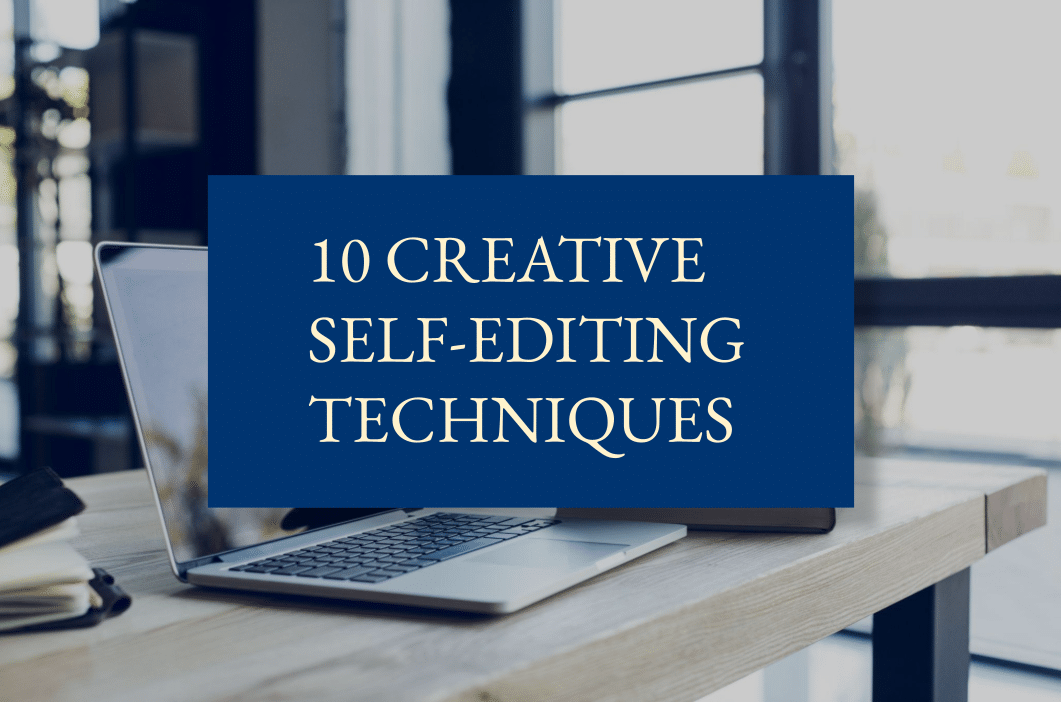
So, you’ve written a novel. The bones are all there: a compelling premise, vivid worldbuilding, characters your readers will love spending time with. Now you want to take it to the next level.
Before entrusting your manuscript to a professional editor, there are a few tricks you can do to get your work into the best possible shape. We’ll talk about two approaches: editing the overall story, and editing your prose on a line level.
Story editing
Before embarking on the treacherous journey of line editing, you need to make sure the plot and characterisation is as strong as it can be (if you do it in the other order, you might end up needing to line edit twice). Here are some sneaky tips you can use to corral your story into shape.
Reverse outline
This involves taking a proven story structure like the three-act structure, the five-act structure, Freytag’s pyramid, or the Hero’s Journey and laying your plot over top. It helps verify that you have all your important plot points, and that you don’t have any scrunched too close together or spaced too far apart.
These structures will include things like the inciting incident, the first key plot point, the midpoint, and so forth all the way to the denouement, or resolution. Story structures have been used for thousands of years because they’ve been proven to work. Using them will ensure your novel has strong pacing and escalation (which is exactly what readers are looking for!).
Summarise each chapter in one sentence
Create a list of premises for each chapter or scene in your novel. When you look at your list, it should create an overview of a cohesive story. Condensing your novel down to the barest of bones will show you if anything is superfluous or missing.
Check to see that each chapter naturally leads into the next, and that nothing seems to come out of left field with no context. If so, you may need to add some extra connective tissue to link it all together. Also look for any chapters that don’t seem necessary to the story; each one should be pulling their weight.
Isolate each main character’s value reversal
Now, onto your major players. A strong protagonist generally undergoes what’s called a dramatic arc, or a shift from one state of being to another. Greedy Ebeneezer Scrooge becomes generous and compassionate. Prejudiced Mr Darcy learns to see past social class.
To check if you’ve done this effectively, isolate the key trait in your main character that undergoes this inversion. It may be something like cowardice to courage, superficialness to authenticity, submissiveness to independence. Or, if you’re writing a tragedy, the change will go in the opposite direction.
If you’re not sure what your main character’s value reversal is, see if you can find ways to emphasise their journey a little bit more.
Catalogue your protagonist’s active choices
I always recommend this for writers who are struggling with a passive protagonist. Main characters, particularly in the second half, should drive a story by making conscious choices. You can create an overview of your character’s choices using a sequence of arrows: Up ⬆️ for the moments when your main character makes an active choice, and Down ⬇️ for the moments when something happens to them that’s beyond their control.
A successful character arc will look something like this:
⬇️_⬆️_⬇️_⬆️_⬆️_⬇️ / midpoint / ⬆️_⬆️_⬆️_⬇️_⬇️_⬆️
The protagonist gets kicked around a bit at the beginning, and then they start to get a handle on things. They experience a setback just before the novel’s midpoint turn, which pushes them into more decisive action. There’s another battle to face right at the climax, and the story ends with them getting back up and taking back control of things for good.
If you see too many down arrows in your character’s journey, look for ways to give them a more active role.
Join our email list for authors
Join our email list for content and opportunities to help you develop your writing, promote your books, and build your author business.
Line editing
Once your story is the very best you can make it, it’s time to look at polishing up the prose.
Try a new font
It can be hard to look at a manuscript with new eyes when we’ve been staring at it for months or years. Temporarily setting the entire work to a different font (many writers swear by Comic Sans) can help you home in on details you may have otherwise missed.
Find and destroy weak verbs
With the exception of “said” (the Little Black Dress of dialogue tags), your verbs should be evocative and specific. For example, a character who “walks” might instead saunter, shuffle, amble, stride, trudge, stomp, or stroll; each verb gives the scene a slightly different feel. The more specific your verb, the closer your reader will feel to the scene.
While you’re at it, seek out those pesky past-tense to-be verbs: “was”. This can help ferret out the passive voice: “He was hit by James” rather than “James hit him”.
Remove dialogue tags to test distinct characterisation
For each extended conversation between two or more characters, copy and paste the conversation into a new document and remove all the dialogue tags. This means everything in the scene will, temporarily, be wrapped in quotation marks.
The goal is to see how well this dialogue stands without tags that cue the reader into who’s talking. Ideally, each character’s voice should sound enough like them that you can pick out who each line belongs to. If they all sound sort of the same, see if you can incorporate a bit more individuality into each voice.
Create a strong opening by trimming
Very often the first page or first few pages of a novel is the writer’s way of finding their path into the story. It’s useful as a tool, but once you’ve found your way in, much of that waffling (sometimes called “throat clearing”) can probably be cut.
Look at your opening and ensure you begin right in the action, with a hook that will grab and hold your readers’ attention.
Use your highlighter to improve rhythm
Play with colour. To ensure your work flows in the most compelling and lyrical possible way, use your highlighting function to individually mark short, medium, and long sentences in different colours. Some writers naturally lean towards complex sentences, while others prefer simple ones. Each page should have a balance of both. If you see too many of the same colour in a row, look for ways to change up the rhythm.
You can also use this trick to influence your story’s pacing. Use primarily shorter sentences for action scenes, and longer ones when you need to give your characters and your readers a chance to catch their breath.
Examine your landing words
“Landing words” refers to the word or phrase that closes a sentence, paragraph, or chapter. Where possible, try to structure your segments so that they land on the most evocative words.
Here’s an example:
“He watched his friends from the corner of his eye, debating on whether to betray them or not.”
“He watched his friends from the corner of his eye, debating on whether or not to betray them.”
The second version lands on the image of betrayal, creating a more powerful overall image. You can use this trick to create a deeper emotional bond with your reader.
Fija Callaghan is an author, poet, and unapologetic daydreamer. Her work has been shortlisted and longlisted for a number of short story prizes, and you can find her writing in publications like Gingerbread House, Crow & Cross Keys, Corvid Queen, and Mythic Magazine. When not writing or helping other writers get the best out of their work, she can be found haunting her local bookshops or watching the tide come in.
Join our email list for authors
Join our email list for content and opportunities to help you develop your writing, promote your books, and build your author business.
